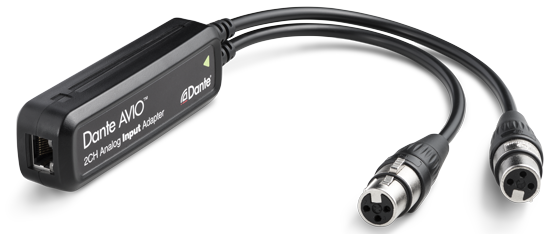
Dante uses exactly the same networking technology as any other computer network – they’re identical, and completely compatible. This in turn means that the Windows and MacOS computers now used in modern audio production and recording can easily connect directly to any Dante system using their existing network ports – no other hardware or conversion is required. Dante-connected laptops are now a common sight at shows and in recording studios.
Dante is part of the long, ongoing transition from analog to digital that began decades ago with the introduction of PCM recording and the CD. With Dante, an AV system is digital from edge to edge.
ML: Can you give us an example or two of a practical setup/application of a Dante network? Maybe one from an install situation, and one from a live/touring situation.
BP: Let’s start with a large installation, in this case, the Columbus Zoo in Powell, OH. It covers 580 acres and previously used a mix of more than 900 unintegrated analog endpoints with no central management to support a variety of background music and public address systems. This system had grown organically over the years as different contractors added complexity, which meant that many changes required days to execute, with employees going from device to device.
Dante was selected as the foundation upon which to build a new AV system, and hundreds of Dante-enabled products were purchased from more than 10 different vendors. This immediately solved problems of reconfiguration, which could now be done from a desk in minutes.
The system was further refined with the inclusion of Dante Domain Manager – a server-based tool that enhances Dante by allowing an administrator to subdivide the system into individually managed groups, or domains. Each of the domains corresponds to functional parts of the zoo compound, making it easy to adjust audio in one area without affecting others. Domain Manager also supports mandatory user authentication, which means that only qualified people can make changes to any domain.
At the Columbus Zoo, a sprawling, unmanageable, and suboptimal system was replaced with one that’s easy to use, easy to understand, easy to expand, easy to secure and offering higher performance for patrons.
Audio networking is a natural fit for live tours and events. Large, heavy snakes are eliminated, and multichannel cable runs are replaced with a single, skinny length of Cat-5e. Dante’s low latency – typically 1 millisecond – is ideal for live performance requirements.

Rat Sound Systems (Camarillo, CA) uses Dante to deliver sound at the Coachella Valley Music and Arts Festival in Indio, CA. With outdoor systems covering large physical areas, over 21 delay positions are required. Using Dante-enabled loudspeaker processors and mixers, these towers could be set up in a single day, freeing time for other setup activities. Yamaha DSPs are used employing Dante network redundancy to ensure a great audience experience even if there are equipment failures on the primary system.
Dante’s high channel count capabilities make it easy for front of house and monitor mixers to share as many channels as needed between one another, simplifying the deployment of IEM systems. Live sound was the first area of the AV market to fully embrace Dante AV-over-IP. There are hundreds of Dante-enabled products available for this segment, from mixers and power amplifiers to DSPs and wireless microphone systems.
